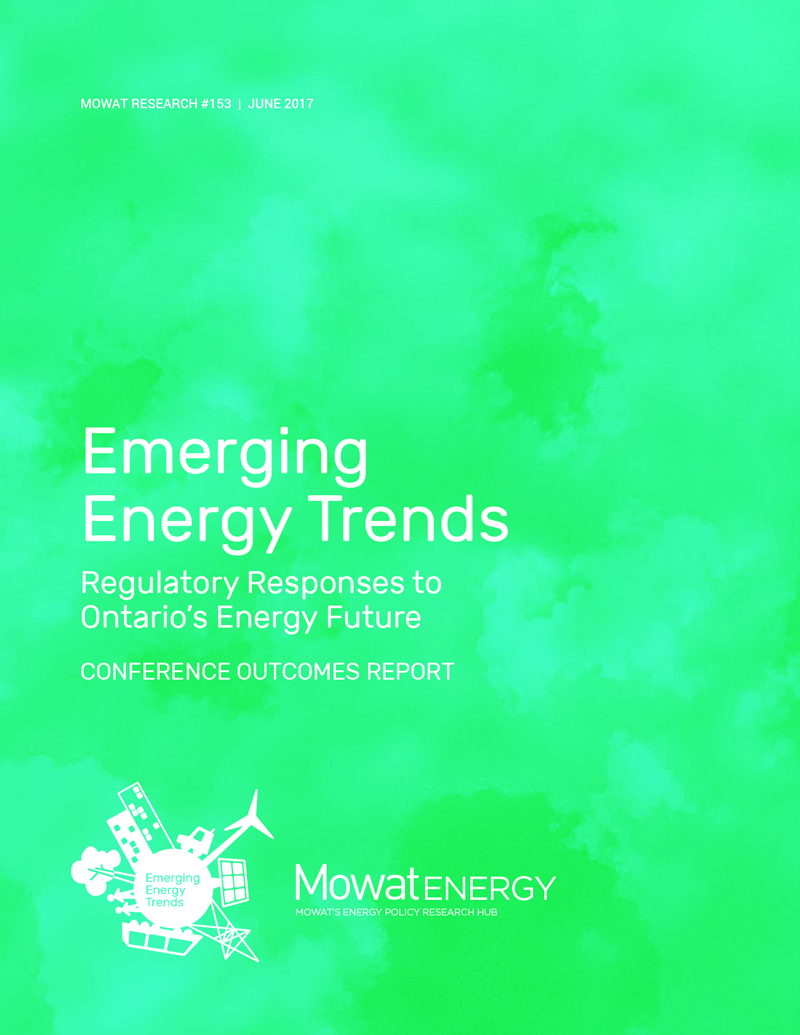August 2, 2017
Regulatory responses to Ontario’s energy future
On May 29, 2017, Mowat Energy hosted an international conference exploring the future of energy in Ontario. This outcomes report is a comprehensive rendition of the proceedings of the conference which includes a detailed description of the discussions that occurred and the panel responses to the very helpful questions from the floor. In addition, links to the Conference Agenda and Speaker Bios, and a video of the entire conference are included in the Appendix.
Preface
What emerged from the conference was that there are areas of agreement from a broad range of interests, as well as points of spirited departure. It is no surprise that there remain key areas that require further examination and research, and structured further discussion.
We also learned that jurisdictions all over the world are hard at work in trying to find the right policy responses to unprecedented challenges to the status quo. It is also safe to say that no jurisdiction of which we are aware has arrived at a confident and comprehensive way forward. It is clear that each jurisdiction will have to find the most appropriate and constructive architecture to suit its particular circumstances. No one as yet has found a “ silver bullet” solution. In short, Ontario is not alone in trying to create the optimal environment for the second century of energy regulation.
There are significant and costly risks in getting it wrong. But there are also significant gains to be made if the right policy and regulatory measures are adopted.
We know that a more inclusive, comprehensive and structured regional planning process will be an important part of the evolution of our system. All forms of energy need to be engaged to ensure that the opportunities available are taken advantage of, and all configurations of utilities and customers need to be considered.
Continue Reading
With this report we were also releasing the video of the conference proceedings which captures everything that was said at the conference. A link to that video appears in the Appendix. We hope you find this useful.
Finally, we would be remiss if we did not address the importance of effective consumer engagement in the processes that we expect will follow as policymakers and regulators develop the next steps in developing the Ontario response. Mowat has done considerable work on this issue, through a number of reports and papers over the last few years, culminating in a co-authored report earlier this year entitled Representing Consumers’ Interests in Ontario. This report can be found in our On the Grid Series.
The presentations at the conference illustrate, among other things, that the emerging energy trends, and in particular the integration of distributed energy resources (DER) into the distribution system, will have potentially profound implications for all categories of consumers including passive residential consumers. Those implications include the availability of technologies to give consumers far greater control over their consumption and use of electricity, the nature and the costs of the restructuring of the distribution system, and the nature and cost of consumers’ relations to their fellow consumers. It is critical that consumers be made aware of these implications and be given the opportunity to fully and effectively participate in the planning for and the implementation of the new energy markets. To ensure that, it is essential that consumers be independently represented by their own energy consumer advocate. We cannot pretend that any existing mechanism, whether in the government or the OEB or otherwise, can provide the consumers with the information required for them to make fully informed decisions or to provide independent, forceful advocacy on their behalf. It is also essential, we suggest, that consumer representation be in place at the earliest stages of the planning and implementation process.
Finally, we want to acknowledge the very material contribution of Cynthia Chaplin to the creation of the Outcomes Report.








